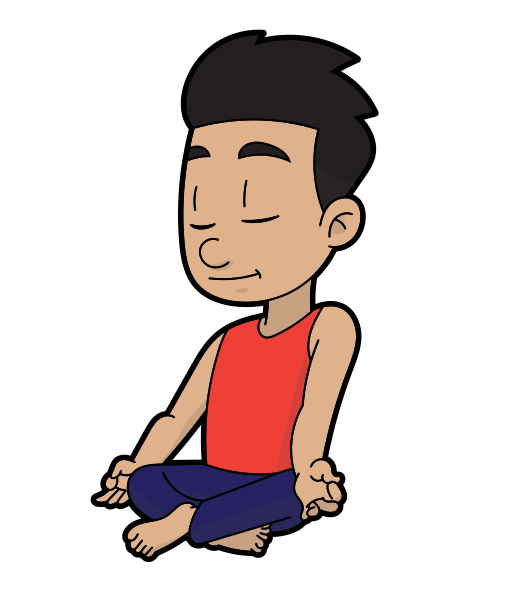When we’re having a panic attack, or starting to feel anxious, our breathing often speeds up. We may even start to hyperventilate, or feel like we can’t breathe and are going to suffocate. The key to calming our breathing when we’re feeling anxious or starting to panic isn’t to breathe deeper, which can actually make things worse, but to breathe slower. This breathing exercise is a great way to slow down our breathing, by breathing out for twice as long as we breathe in.
DBT Skills: Emotion Regulation
 Emotion regulation is a core dialectical behavior therapy (BDT) skill. In some earlier posts about emotion regulation we learned that the ways in which we often try to deal with emotions—such as trying to problem solve, control, or avoid them—tend to be counterproductive. We also looked at a number of more helpful ways we can deal with our emotions such as validation and acceptance. The video below puts this altogether and explains the DBT skill of emotion regulation. To learn more about emotion regulation, please check out my free DBT Skills Course.
Emotion regulation is a core dialectical behavior therapy (BDT) skill. In some earlier posts about emotion regulation we learned that the ways in which we often try to deal with emotions—such as trying to problem solve, control, or avoid them—tend to be counterproductive. We also looked at a number of more helpful ways we can deal with our emotions such as validation and acceptance. The video below puts this altogether and explains the DBT skill of emotion regulation. To learn more about emotion regulation, please check out my free DBT Skills Course.
DBT Skills: Emotion Regulation and Acceptance
Cognitive Therapy and Challenging Negative Thoughts
When we’re feeling distressed about something or going through a difficult emotional experience it can feel like our thoughts are running out of control. Our minds start racing and we find ourselves dwelling in the past, worrying about the future, or just spinning our wheels trying to think ourelves out of our problems.
You Can’t Control Your Emotions
Cognitive Fusion and Defusion in Acceptance & Commitment Therapy
In a previous post we looked at some ways to practice letting go of thoughts, but it can often be difficult to let of thoughts because they have such a powerful pull, especially when the thoughts are related to a strong emotion. In my post, What is Acceptance and Commitment Therapy?, we learned why acceptance is so important in ACT. Cognitive defusion is a way of accepting our thoughts, allowing them to pass into and out of our minds, without getting stuck in our heads.
Steven Hayes, who developed Acceptance and Commitment Therapy (ACT), coined the term “cognitive fusion” to describe times when we are so tightly stuck to our thoughts, we become “fused” to them. When we’re experiencing cognitive fusion, we can’t separate ourselves from our thoughts. Our thoughts become our reality. We feel removed from the world outside of our thoughts, removed from our senses, from what we’re doing, and even from the people around us.
The opposite of “cognitive fusion” is “cognitive defusion.” Cognitive defusion involves taking a step back from what’s going on in our minds, and detaching a little from our thoughts. In this state of defusion, we can observe our thoughts and other internal processes without getting lost in them, stuck in them or fused with them. We can simply notice our thoughts, watch them, accept them and let them go if we choose to.
Watching Thoughts and Letting Them Go
In a recent post we looked at how mindfulness can help us let go of our thoughts when we get caught up in ruminating or worrying or just thinking in circles. Letting go of thoughts is never easy, however, and in this post we’ll look at how simply watching our thoughts can help us let them go.
Thoughts pop into our heads all the time, and usually we don’t pay any special attention to them: they enter and leave our minds all on their own, just like a car that drives into our line of sight, remains in our field of vision for a few moments, and then drives along and passes out of our line of sight again.
How to Validate Your Emotions
 In previous posts we‘ve seen that many of the ways we try to deal with unpleasant emotions—such as trying to problem solve, control, or avoid them—don’t work. In fact, they tend to make our unpleasant emotions even stronger.
In previous posts we‘ve seen that many of the ways we try to deal with unpleasant emotions—such as trying to problem solve, control, or avoid them—don’t work. In fact, they tend to make our unpleasant emotions even stronger.
So what can we do when we’re experiencing difficult or painful emotions? Since emotions arise spontaneously and outside of our control we really have no choice but to practice acceptance of our emotions, be they pleasant, unpleasant or neutral.
One of the most effective ways to help us accept our emotions is to validate them. In this post, we’ll look at why learning to validate our emotions is important, and how we can start doing it.
Following Your Breath Mindfully

In a previous post about our breath we looked at the difference between abdominal breathing and breathing from your chest, and how abdominal breathing can help alleviate stress and calm your body, mind and emotions.
It’s as simple as bringing your attention to your breathing for a few minutes, or even just a few breaths. This is easier said than done, however, as our minds tend to wander a lot at the best of times, and when we’re in distress, it’s even more difficult to stay focused on our breath.
In the next few posts we’re going to practice some exercises to help keep your mind focused on your breathing, starting with Following Your Breathing By Counting Your Breaths.
How Not To Deal With Emotions
Emotions can be a great source of richness in our lives. However, when faced with overpowering negative emotions like sadness, guilt, fear and anger, our lives can seem overwhelming.
Most of us have never learned to deal with our emotions. Instead, as Sheri Van Dijk notes in The Dialectical Behavior Therapy Skills Workbook: Using DBT to Regain Control Of Your Emotions and Your Life:
Generally, if you’re experiencing an uncomfortable emotion, you don’t want it to stick around. That’s because it’s uncomfortable, of course. Ironically, this desire to get rid of unpleasant emotions can cause you to behave in ways that cause the emotion to stick around or even to become more intense.
Some of the most common ways we try to get rid of unpleasant emotions are by problems solving them, fighting or attempting to control our emotions, or trying to suppress or avoid them completely. In this post we’ll look at what happens when you try to problem-solve your emotions.
Suppressing and Avoiding Emotions
 In previous posts we looked at what happens when we try to problem solve or control our emotions, neither of which tend to work. When we’ve giving up on trying to problem solve or control our emotions, our next step is often to try to suppress our emotions, or ignore them completely.
In previous posts we looked at what happens when we try to problem solve or control our emotions, neither of which tend to work. When we’ve giving up on trying to problem solve or control our emotions, our next step is often to try to suppress our emotions, or ignore them completely.